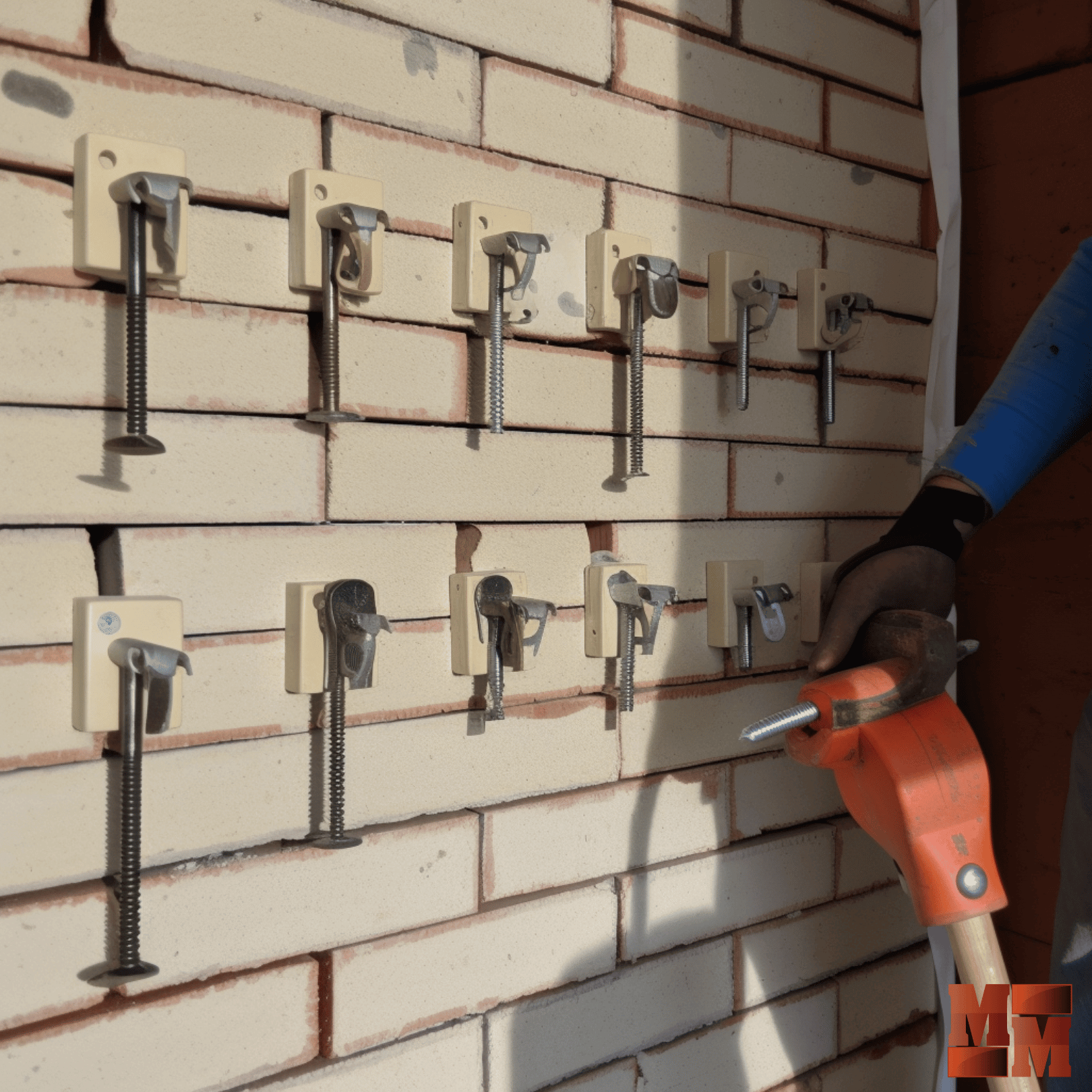Professional Brick Anchor Installation : A Comprehensive Guide to a Secure and Durable Structure
Brick anchors are a critical component of any masonry project that requires the secure attachment of structural elements to brick walls. Whether you're installing a new roof, a balcony, or a fence, it's essential to use high-quality brick anchors that are installed by a professional masonry contractor. In this section, we'll cover everything you need to know about professional brick anchor installation, including the benefits of brick anchors, the different types of anchors available, the installation process, and tips for maintaining your secure structure.
Benefits of Brick Anchors
Brick anchors offer a variety of benefits, including :
- Security : Brick anchors provide a secure and reliable connection between structural elements and brick walls, ensuring that the structure remains stable and safe.
- Durability : Brick anchors are made from high-quality materials, such as stainless steel, which are resistant to rust and corrosion, making them durable and long-lasting.
- Versatility : Brick anchors come in a variety of sizes and types, allowing them to be used for a wide range of applications, from attaching railings to brick walls to securing masonry veneers.
Types of Brick Anchors
There are several types of brick anchors available, each with their own unique characteristics and advantages. Some of the most popular types of brick anchors include :
- Sleeve Anchors : Sleeve anchors are the most common type of brick anchor and are used for heavy-duty applications. They are installed by drilling a hole into the brick wall and then expanding the sleeve by tightening the bolt.
- Wedge Anchors : Wedge anchors are another type of heavy-duty brick anchor that is used for securing large structural elements. They are installed by drilling a hole into the brick wall and then expanding the wedge by tightening the bolt.
- Toggle Bolts : Toggle bolts are a type of light-duty brick anchor that is used for attaching lightweight objects to brick walls, such as pictures or mirrors. They are installed by drilling a hole into the brick wall and then inserting the toggle bolt, which expands behind the wall when the bolt is tightened.
Brick Anchor Installation Process
The process of installing brick anchors can vary depending on the specifics of the project, but generally includes the following steps :
- Site Preparation : The masonry contractor will assess the site and develop a plan for the installation, taking into account factors such as the type of brick wall, the load requirements, and the location of utilities.
- Anchor Placement : The contractor will determine the location and spacing of the anchors and mark them on the brick wall.
- Drilling : The contractor will drill the appropriate size hole into the brick wall using a masonry bit.
- Anchor Installation : The contractor will insert the anchor into the hole and tighten the bolt or screw to secure it to the wall.
- Finishing Touches : Once the anchors are in place, any necessary finishing touches such as jointing, sealing, and cleaning will be completed.
Tips for Maintaining Your Secure Structure
To ensure the longevity and stability of your secure structure, it's important to take proper care of it over time. Here are a few tips for maintaining your structure :
- Inspect your anchors regularly : Regular inspections can help identify any potential issues or damage to the anchors and allow for prompt repairs.
- Clean your anchors periodically : Brick anchors should be cleaned periodically to remove dirt, debris, and other contaminants that could compromise their performance.
- Perform regular maintenance : Performing regular maintenance, such as tightening bolts and lubricating moving parts, can help extend the lifespan of your anchors.
Conclusion
Brick anchors are an important component of many masonry projects, providing a strong and secure way to attach fixtures and structures to brick surfaces. By understanding the benefits of brick anchors, the different types available, and the installation process, you can ensure a successful and long-lasting project.
When it comes to installing brick anchors, it's important to work with a professional contractor who has the expertise and equipment to ensure a safe and effective installation. With proper planning and preparation, and by following the steps outlined in this article, you can ensure that your brick anchor installation project is a success.
With the right tools and techniques, you can confidently tackle any project that requires brick anchors. Whether you're installing a mailbox, hanging a sign, or adding a trellis to your brick facade, the right brick anchor can provide a strong and secure connection that will last for years to come.

